child swinging on swing set
Thinking about the wonderful and graceful art of swinging takes me back to one of my favorite childhood play experiences, swinging like Tarzan of the jungle on ropes suspended from branches of super tall Douglas fir trees in the Northwest.
Swinging has been around in some form or fashion since man’s earliest moments. Homo erectus and then Homo sapiens were among the first to experience swinging pleasure on jungle vines. Though we really don’t have factual evidence of the unveiling of the first modern-day swing, a pendulum-type device suspended from a horizontal beam, we do find illustrative evidence in Europe and Asia of people swinging several centuries ago. You may recall from Western Civilization course studies, photos of well-dressed children playing on swings with flat board seats in the beautifully manicured Victorian gardens of the 1800s.
During the Industrial Revolution and the advent of child labor laws, children needed public places to gather and play. With the development of the public park, the swing became one of the newly formed play environments’ most popular devices. This phenomenon begs the question, why? Why do humans of all ages enjoy the activity we call swinging?
It is important to note that public playground swings are no longer attached to composite play structures. Injury data from the ’70s and ’80s revealed that having a separate area for swings would help prevent injury from players running into swingers on the playground. In addition, large and heavy metal animal swings introduced during the post-World War II period have been eliminated from North American playgrounds to prevent injury from impact and create safer playgrounds.
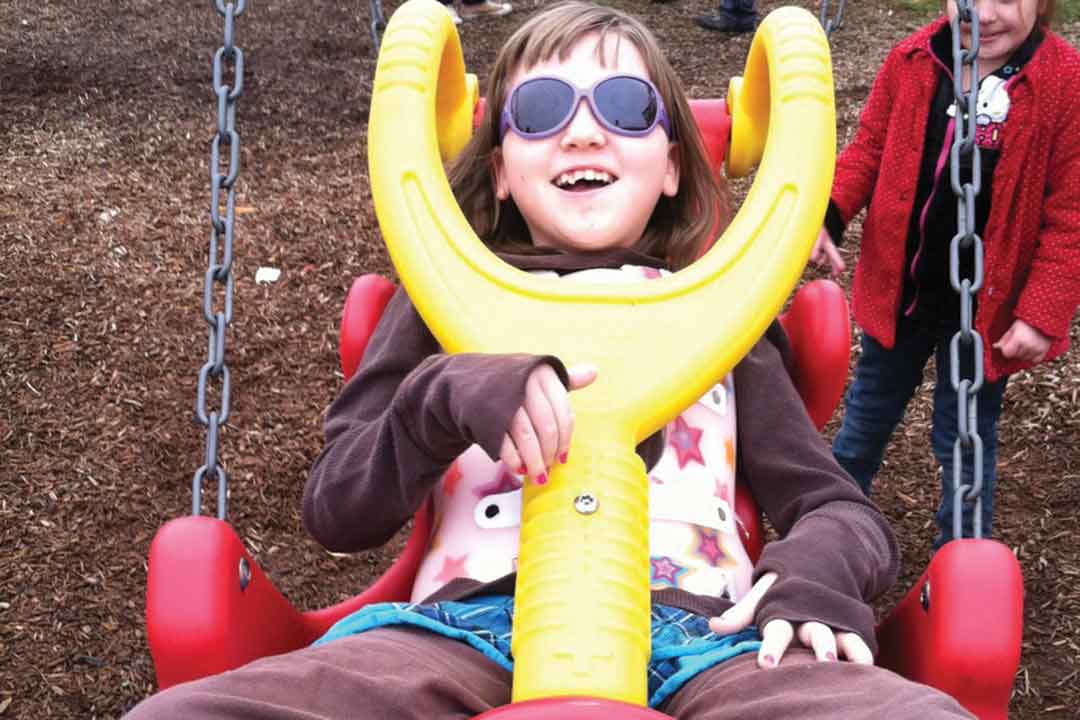
Why We Swing?
When we think about why most humans truly enjoy swinging, we need to break down what is actually happening. While swinging, we experience a full range of sensations, from the calming rhythm of our to-fro movement to the excitement of rapid travel through space and time. These experiences are linked to the pre-birth childhood movement in the mother’s womb and the child's first sensation of gravitational forces.
Let’s take a deeper dive into why we enjoy swinging. Swinging stimulates our bodies’ sensory systems, namely our vestibular and proprioception systems. I love to swing because of the way it affects my inner ear. Vestibular stimulation occurs when we experience movement through time and space in combination with the earth’s gravitational forces. Experts, including Dr. Stuart Brown and Dr. Joe Frost, explain that during swinging, the three semicircular canals in the inner ear are responding to movement and acceleration in the horizontal, vertical, and diagonal planes. For me, it just feels really good, especially when I close my eyes.
The same experts have explained that such stimulation is directly related to the sense of balance. This reminds me of my first play research experience back in 1984 when Ken Kirn, the President of Columbia Cascade, explained that young children who have difficulty with balancing may also have difficulty with reading. Ken introduced me to the world of play research and to one of its true play design pioneers, M. Paul Friedberg. This early introduction to play research and design sparked my lifelong love for play.
When we think of man’s evolution, we are reminded of our relationship to chimpanzees, which are reported to have 98.5% of the same genes as humans, and they spent millions of years swinging and moving freely in the tree canopy. During this time, the swinging (three-dimensional movement through space) stimulated the cerebellum, thus further developing the balance, planning, and language systems, and improving the ability to establish emotional regulation. Swinging fires up the brain by activating the connections in the prefrontal cortex, and some of my friends claim to experience this “rush” during and immediately after they swing.
Beyond vestibular development from swinging is the natural effect on our proprioceptive system, our sense of locomotion, or our sense of muscle location and position. Swinging helps us humans develop and maintain the body’s proprioceptive system which draws information from our muscles and joints. The information from our muscles and joints is developed by our bodies as they move through space, and this movement creates signals to our central nervous system, which causes us to react to the stimuli. I often think of how I shift my body during the swinging movement, which basically consists of pumping my legs combined with an appropriately timed torso lean. If I swing too hard and cause that “bump” at the top of my swing arc, then I readjust by slowing my legs and reducing my torso lean to create that beautiful rhythmic motion.
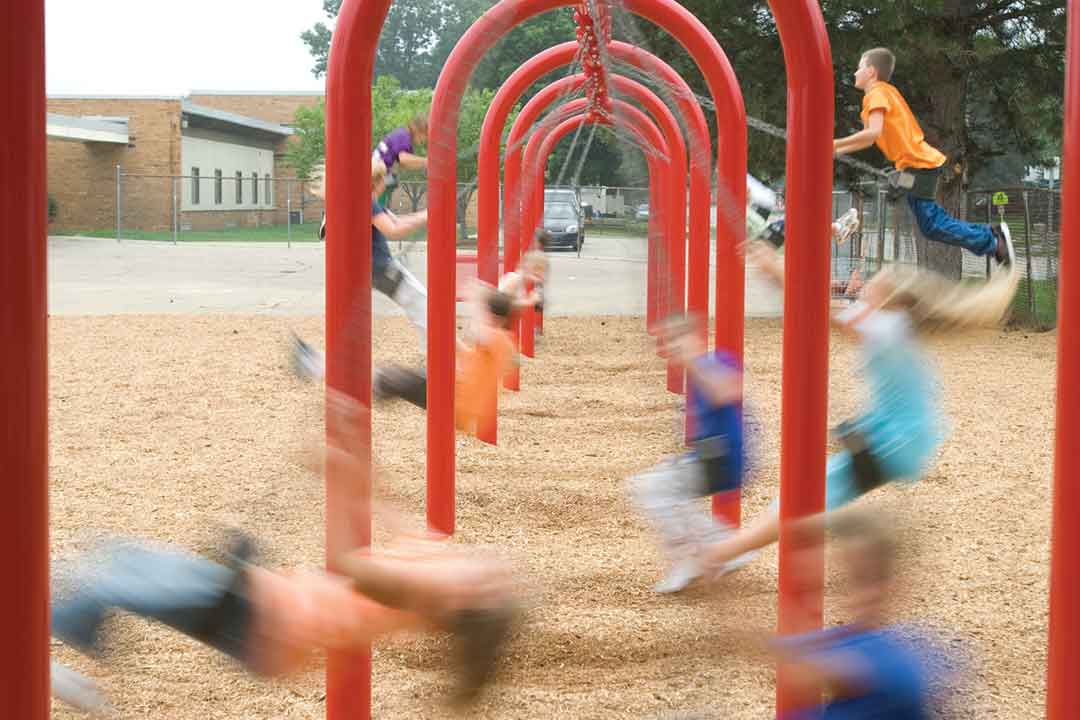
Many of us love to swing because it is good for us…we feel much better after a ten to fifteen-minute swinging session. Our central nervous system and inner ears are stimulated in a natural and substance-free manner; it costs us nothing but the joy of spending ten to fifteen minutes freeing the mind of our daily troubles. Swinging’s lasting effects helps me think clearer and to create a positive attitude in a troubled world.
There are many types of swinging devices on modern playgrounds, including the traditional single to-fro pendulum swing, the full 360-degree rotating multiple occupancy tire swing, the newer multiple occupancy to-fro swing, the 360-degree single disc swing, and the new reactive disc swings. All of these devices create pure forms of joy for children and their parents. If you want to know how popular swings are, visit your local elementary school (hopefully it has swings!) and watch where the children run to during recess (hopefully it has recess!). You will find that swings fill up first! Be sure to get permission and register as a guest from the school office before setting foot on an elementary school playground during school hours.
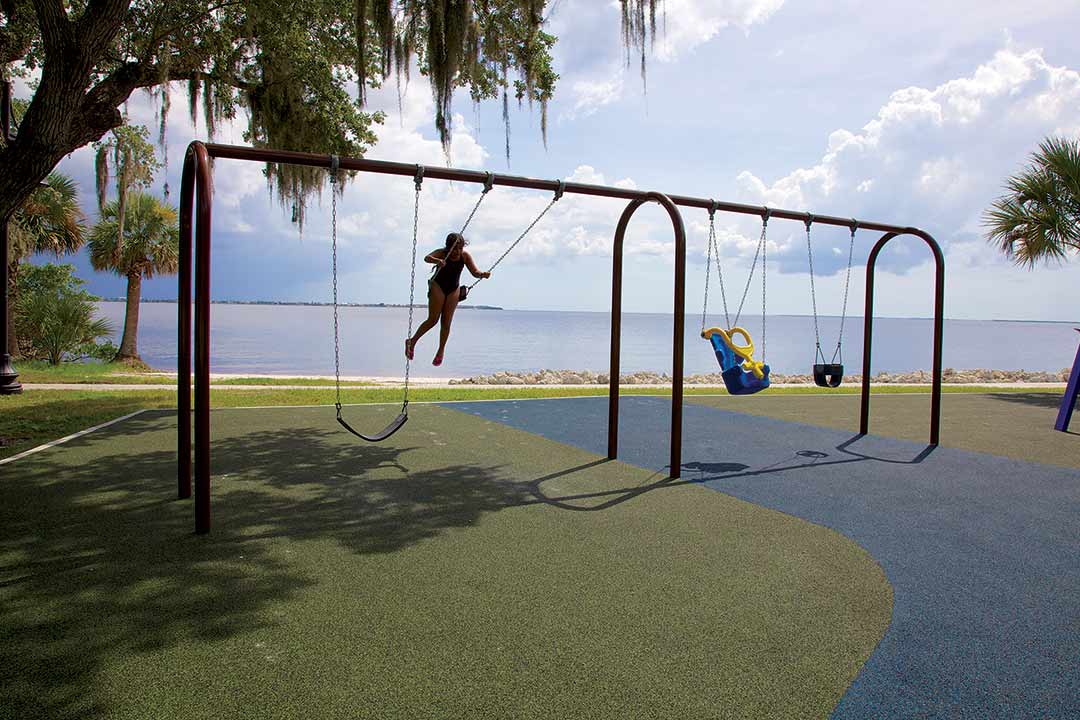
How We Swing
The most popular and common to-fro swing in North America is the strap or belt seat. Typical swing configurations include a bay with two seats suspended from a horizontal beam. Frequently, several bays of swings are installed to allow multiple individual users. The modern-day strap seat is designed to maintain its function in extreme high-use conditions. Strap seats typically are made from rubber, designed to have a soft leading edge, and include heavy-duty lightweight interior structural steel for added strength and durability. Rubber completely molded over an interior stainless steel strap is one of the preferred manufacturing methods. Early versions of the strap seat using standard black steel did not last as long due to internal corrosion.
The overall strap seat design considers the size and weight of the user while minimizing the head impact of the seat’s leading edge. All to-fro swing seats must meet a head impact test as set forth in ASTM (ASTM International) F1487 Standard Consumer Safety Performance Specification for Playground Equipment for Public Use. Remember, the minimum clearance from the bottom of both to-fro and multiple occupancy swing seats when fully loaded to the protective surface shall be no less than 12 inches for both preschool and school-age children.
Swing beam heights of to-fro swings should be taken into consideration. Lower swing beam heights for younger children seem to be common practice and make sense. Seat typology is also critical for children, usually toddlers, unable to support themselves in a traditional strap seat. Full bucket seats work well for both the infant/toddler (under two) and the lower spectrum of the preschool (2-5). Care should be taken in selecting full bucket seats as parents of children have been known to experience difficulty when placing a two or three-year-old in a seat designed specifically for the under two child.
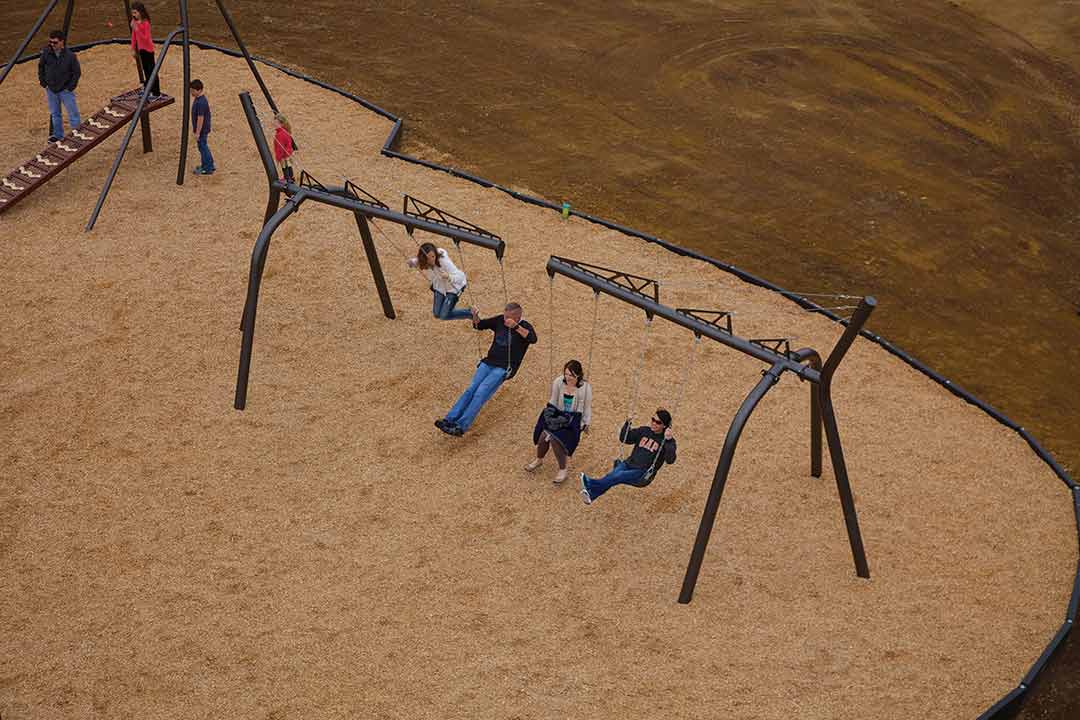
Another key design element when utilizing full bucket seats is the seat installation height, which tends to be close to 24 inches above the protective surface, enabling parents and caretakers to load and unload the child at or slightly below adult waist level. This installation feature also helps to prevent larger children from innocently loading into the full bucket seat which may result in a difficult dismount.
There are many versions of adaptive seats with back support, allowing children who have difficulty maintaining an erect body position the ability to enjoy movement through swinging. One of the pioneers of this type of seat was the JennSwing, still currently available, which is a fairly large rotationally molded seat that supports the user’s full body. Since this invention, many other adaptive seats have been developed, including some with five-point harness straps and/or locking arm mechanisms (similar to those seen on some amusement park rides).
My personal favorite is the Zero-G seat, available in both a smaller 2-5 preschool version and a larger 5-12 school-age size. These two size-appropriate seats help secure the user better than the one-size-fits-all approach of many adaptive swing seats. The Zero-G seats also feature a grooved back design allowing parents and caretakers to temporarily strap the user into the seat for a safer and more stable ride.
Earlier, we discussed the vestibular and proprioceptive benefits of swinging. Now while discussing to-fro swing seat typology, it is a perfect time to interject a story about a dear friend of mine back in Portland, Oregon. Having spent 34 years in the City of Roses and then moving to Fort Payne, Alabama in 1993, I will always have Northwest roots. With the advent of social media, Facebook became a perfect way to keep up with childhood friends and their aspiring families. Several years ago, a friend sent me a Facebook message about a woman who was raising money for a special swing seat for her daughter’s school. Upon reading the post, I reached out to my Facebook friends and asked if anyone knew the family and voila, an amazing actress friend from high school made the connection. I sent a private email to the family stating that our company wanted to gift her a seat for her daughter and that coincidentally, I would be in her area within the next month and would install it for her. Fortunately, Delta Air Lines allowed us to ship the University of Oregon colored Zero-G seat as luggage. When we arrived at the school, local news reporters were there to cover the story.
Since that time, I developed tremendous respect for parents of children with Rhet Syndrome and helped place several other seats. Swinging for these children is extremely therapeutic and helps to ease the pain they experience as a normal part of their day. It’s hard to explain, but the smile and joy of one beautiful child while swinging on her school playground reminded me, and hopefully helps us, better understand why we work to improve play environments and enhance play.
Within the last decade, several European basket-style swings migrated into North America. Initially, they were introduced in Canada, and then a few began to creep into the United States. The problem was, a decade ago the U.S. Consumer Product Safety Commission (CPSC) did not recommend multiple occupancy to-fro swings, most likely based on their recall of all the larger metal animal swings. However, these new basket-style swings typically had a “bumper” on their leading-edge that softened the blow if a person were to be accidentally struck by the seat.
Both CPSC and ASTM considered this technological improvement, and ASTM developed a testing methodology, similar to an existing European test, for all to-fro swing seats. Now you can provide traditional to-fro seats as well as the modern basket-style multiple occupancy to-fro seats. This is a really exciting new experience on the playground that allows a rich and deep social play experience to what was traditionally a single-user event.
The modern playground tire swing continues the thrill of a single-player swinging while adding multiple developmental benefits – revolution, collaboration, “dizzy play,” and socialization. Seemingly evolving from a tire suspended on a rope to an overhead tree branch, the public playground tire swing includes a 360-degree rotating suspending mechanism, usually centered on a fairly long horizontal beam. Some manufacturers still use recycled tires, but the industry norm is a lightweight rotationally molded seat that looks like a tire. For safety reasons, the horizontal beam is designed to allow 30 inches of clearance with the tire seat fully extended at either end from the supporting posts.
This multiple occupancy rotating swing is a playground favorite, usually supporting two or three swingers, with others helping to push and spin the users. Research and personal observation reveal that one of the favorite activities is for one user to keep the ball of their foot firmly planted while others help the device to spin rapidly in a circular motion. This form of “dizzy play” led to the design of many new freestanding rotating devices on the playground. Clearly, the tire swing is one of the playground's most popular devices.
As swings seem to be making a vital comeback on the modern playground, look for new designs using structural technologies to create new experiences. We are seeing cantilevered traditional to-fro swings as well as disc swings that can now fit into narrower spaces with smaller required use zones. These new disc swings allow a 360-degree rotation but with only one end being supported for a much more elegant display. Additionally, European manufacturers are introducing multiple user disc swings that appear to safely allow an action/reaction scenario between two users.
So my advice to you is that if you haven’t personally been on a swing lately, go to your local park and rejuvenate your senses through a simple swing session. It’s an exciting time to be a Swinger!

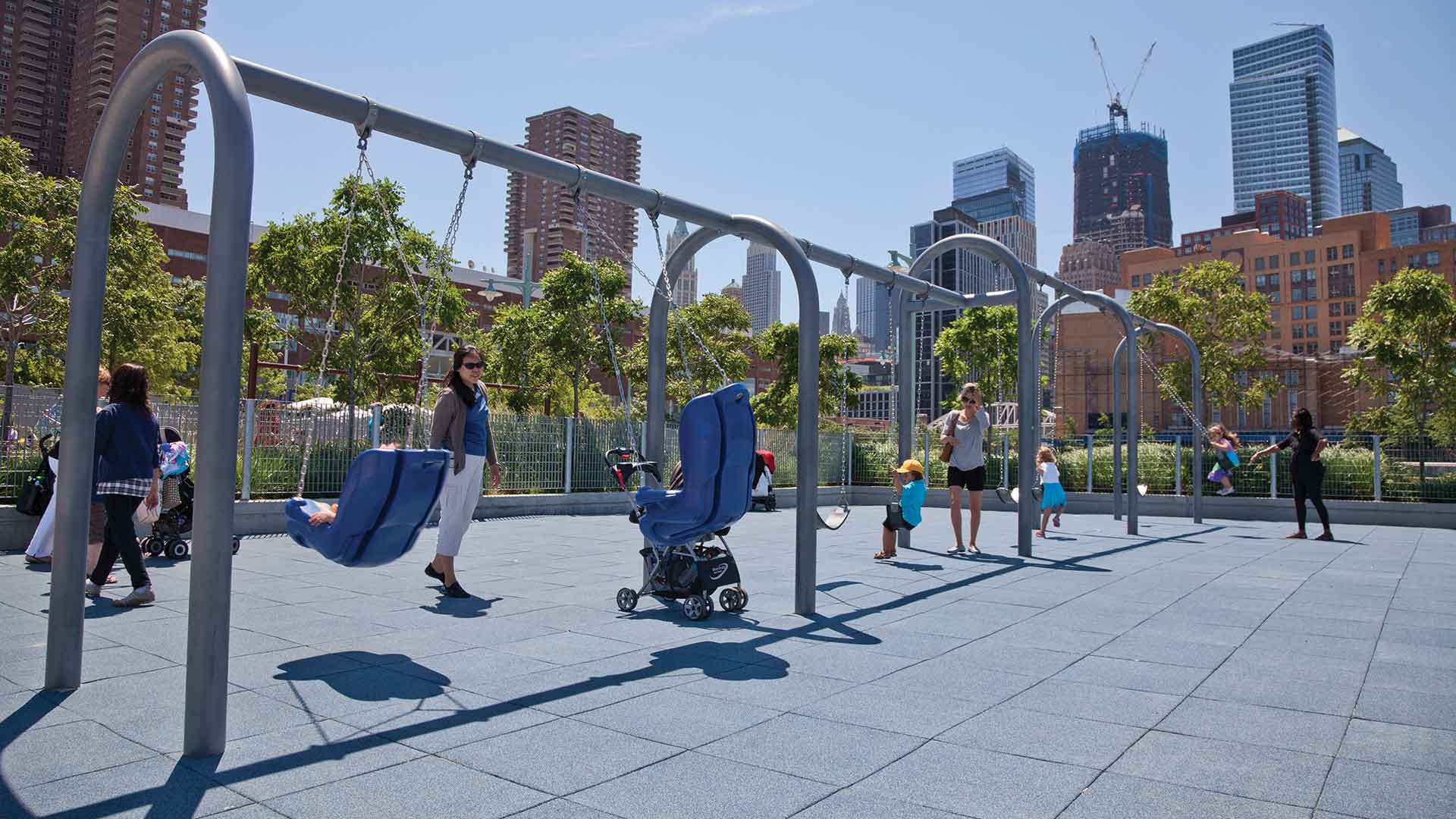

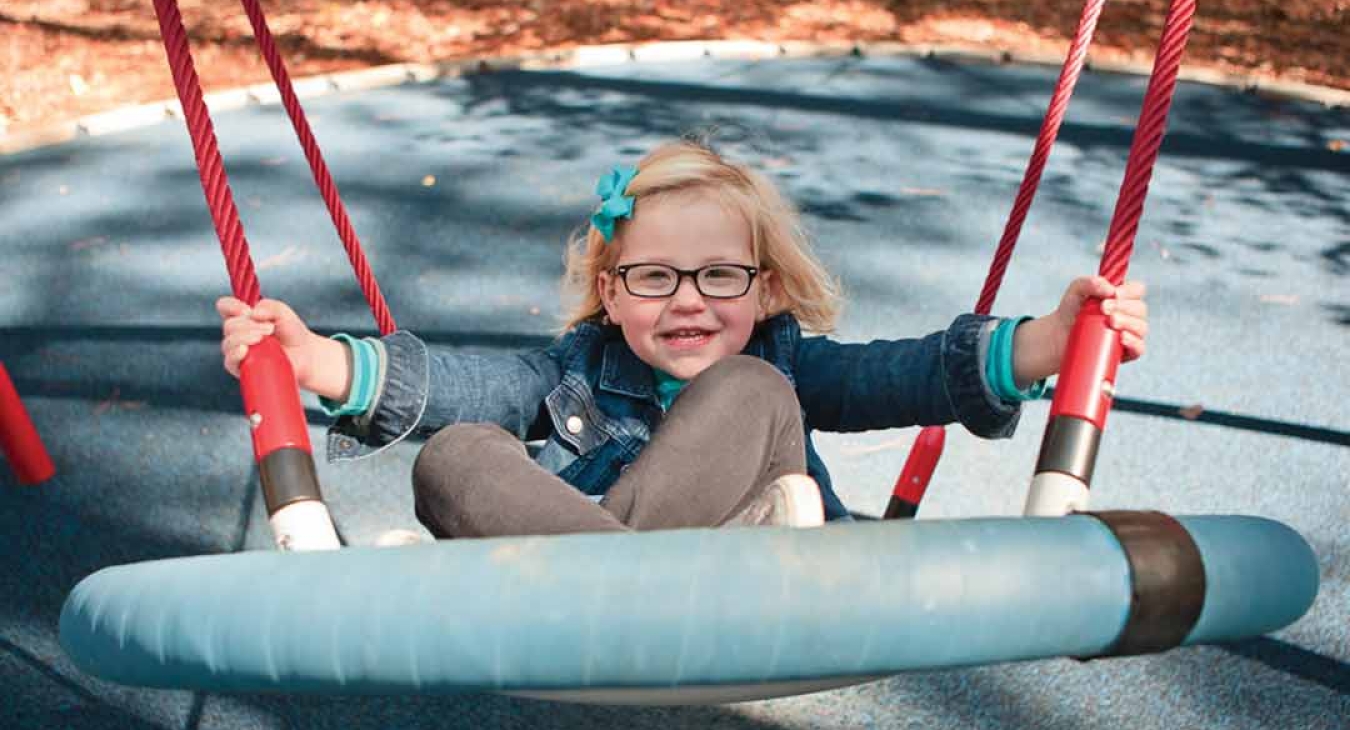

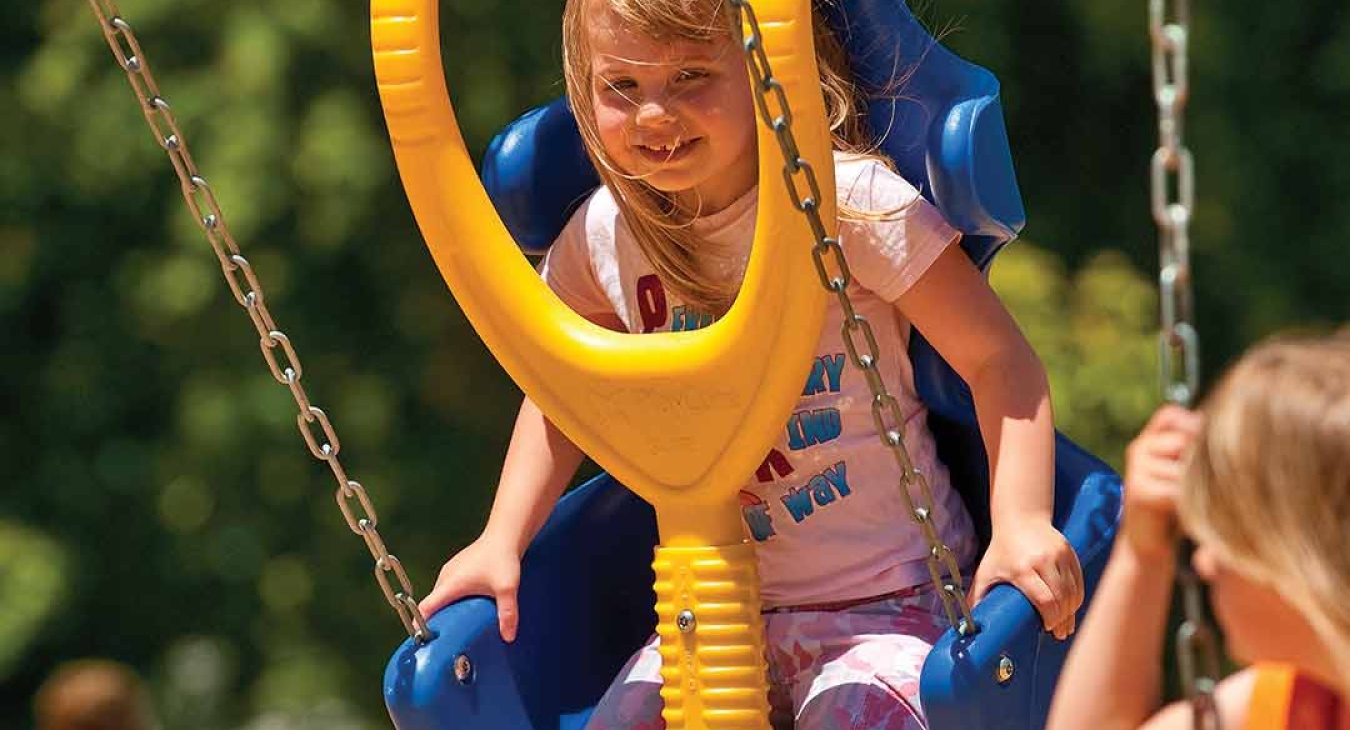
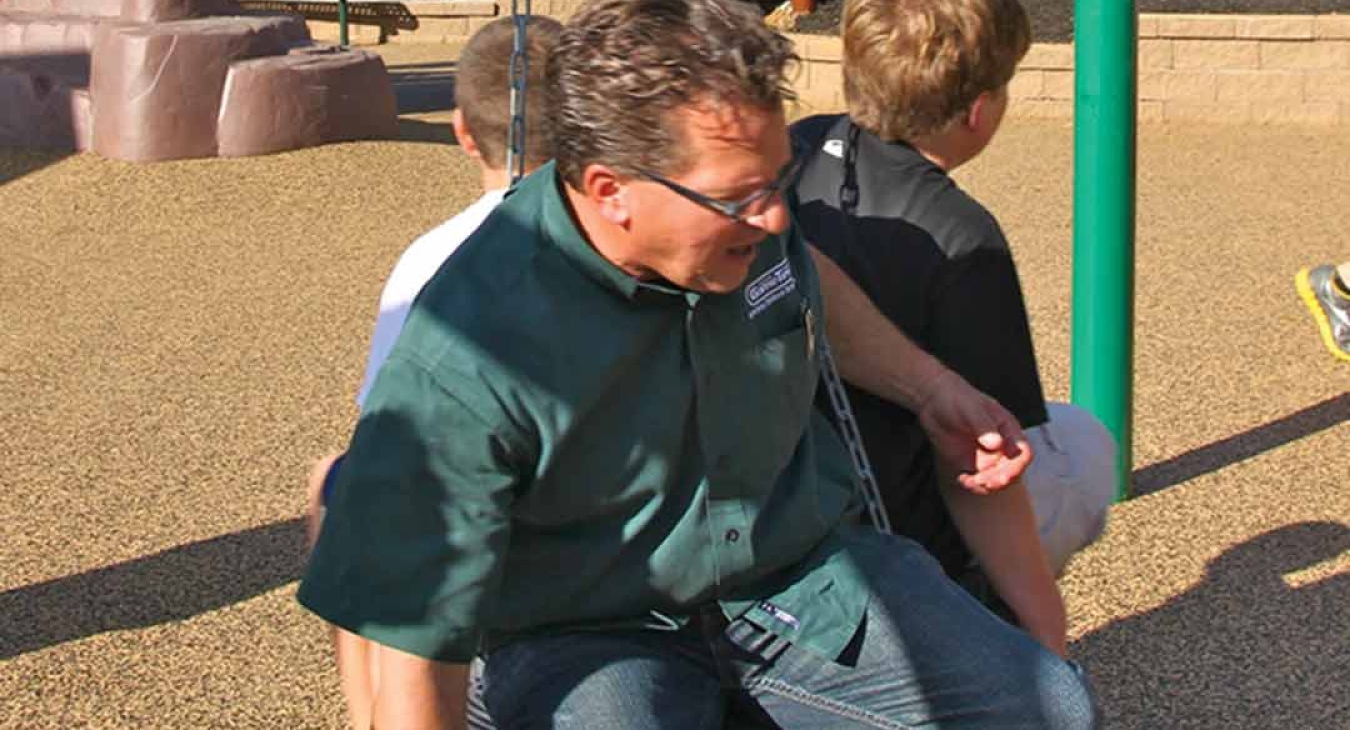

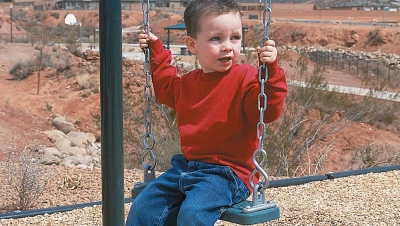




Add new comment